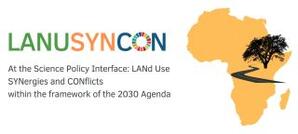Working Package 2
Working Package 2 (WP2) consists of case studies in Sub-Saharan Africa, mainly in Kenya and Tanzania, that provide insights and data for WP1 and WP3 at the local level. In addition to this, we conduct case studies in other countries such as Egypt and Sudan as well.
- Working Package 2a (WP2a) examines the conflict between providing affordable and clean energy (SDG7) and combating hunger (SDG2). Particularly in Tanzania, the increase of biomass production potentially affects the function of the land that has been formerly used for food production. In this project, we investigate whether land leases to international investors for energy and resource production influence food security within countries. Within WP2a, the following tasks are being conducted: (1) Political discourse analysis on the restriction and promotion of biomass-based energy production and the influence of international investors in East Africa, (2) Analysis of the socio-economic effects of bioenergy production based on interviews with the local population, and (3) GIS analysis on "land grabbing" and land use change through bioenergy production
- Working Package 2b (WP2b) examines the conflict erupted between the action of securing food production (SDG2) and biodiversity protection (SDG15). Based on the FAO’s study in 2017, over 22% of Sub-Saharan Africa’s population suffers from malnutrition. Therefore, the pressure on land to produce as much food as possible has increased. At the same time, agricultural products should be produced as sustainable as possible and without heavy use of pesticides, which have led to a sharp decline in pollinating insects. By conducting field study in Kenya, we collect data on food production and impacts on biodiversity. The results follow: (1) Political discourse analysis for the promotion and recommendation of alternative cultivation methods to simultaneously ensure biodiversity protection and food security in East Africa, (2), Comparative study of the impact of different farming practices on biodiversity and food security on small farms (field studies on biodiversity, ecosystem services and food security), and (3) Development of spatially explicit scenarios for the analysis of food security and biodiversity protection at the landscape level.
- Working Package 2c (WP2c) examines conflict between biodiversity conservation as a part of SDG15 and the development of large infrastructure projects(SDG9). Massive infrastructure projects along development corridors throughout sub-Saharan Africa have been initiated in recent years, partly because it is often seen as one of the most important measures for human development. At the same time, roads, railways, and pipelines are cutting through natural and protected areas that are important elements of biodiversity and ecosystem services. To evaluate the effects of transport infrastructure on the local population, structured interviews with the local population will be conducted and combined with the Stated-Preference-Method. At the same time, effects on biodiversity will be assessed through remote sensing and data collection on vegetation and key species along transects. Furthermore, a holistic and interdisciplinary cost-benefit analysis will be developed and applied in the context of SDGs. The results follow: (1) Political discourse analysis on infrastructure development with a focus on road and rail development along or through protected areas in East Africa, (2) Comparative study of the impact of different infrastructure projects (railways vs. roads) on biodiversity (key species, vegetation ecology studies, GIS analysis) and quality of life of the local population (access and use of infrastructure, market access, income, health effects, food prices etc.), and (3) Development and application of a holistic cost-benefit analysis for different infrastructure projects and options based on the State-Preference method.
- Working Package 2d (WP2d) examines the conflict between conservation and livelihoods development of local communities in wildlife corridors. This study intends to address trade-offs between SDG 1 (no poverty), SDG 2 (zero hunger) and SDG 15 (life on land). The intensity of human wildlife conflicts in Tanzania has been increasing, particularly in areas with frequent interactions between rural communities and animals such as wildlife corridors. These conflicts have implications on land use dynamics and land-based productivity in both communities' land and conservation areas. In this project, we examine how we can optimize conservation and development, using different land use and conservation scenarios. Within WP2d, the following tasks are being conducted: (1) Analysis of externalities (costs and benefit) of conservation and its distribution across space and wealth groups, (2) Assessment of the preference of communities for different land use and land access right scenarios, and (3) Analysis of socio-economic and ecological outcomes of the different scenarios and their tradeoffs




